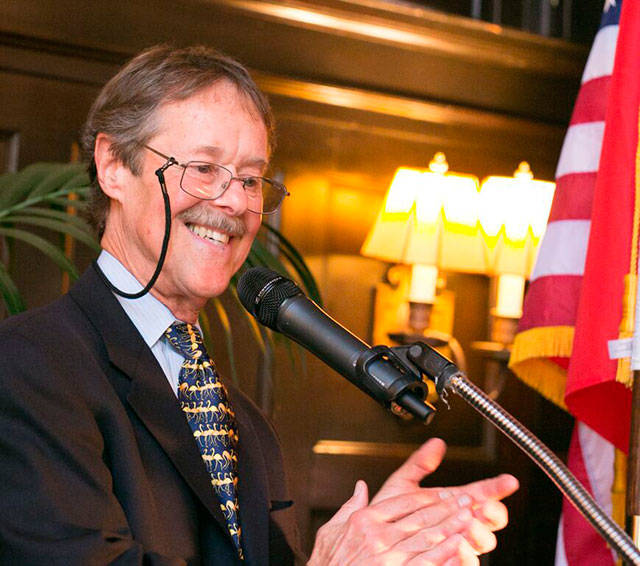On September 18 leaders of North and South Korea signed a September Declaration to advance inter-Korean cooperation and the possibility of the North’s denuclearization.
Critics immediately dismissed the agreement for having accomplished nothing on the latter objective while largely ignoring what was accomplished on the former.
From my perspective, the critics have it wrong: They have bought into the Trump administration’s narrative about denuclearization and failed to pay attention to the importance of North-South Korean cooperation as a tool for reducing tensions on the peninsula and, potentially, for neutralizing if not eliminating North Korea’s nuclear weapons.
Few people outside Washington are likely to read the text of the September Declaration or the accompanying military agreements signed by the two countries’ defense ministers. These documents, far from being mere window dressing, contain substantive tension-reducing steps. And the symbolism is important, too: These are agreements by and for Koreans. As the declaration states: “The two leaders reaffirmed the principle of independence and self-determination of the Korean nation, and agreed to consistently and continuously develop inter-Korean relations for national reconciliation and cooperation… . ”
What are the principal agreements reached? They are:
• “Expand the cessation of military hostility in regions of confrontation such as the DMZ,” meaning no-fly zones and military exercises;
• “Prevent accidental military clashes by promptly activating the Inter-Korean Joint Military Committee,” referring to setting an 80-kilometer maritime buffer area in the East and West Sea where shooting incidents have occurred;
• Open “east-coast and west-coast rail and road connections”;
• Restore (“normalize”) the previously closed Mt. Gumgang tourist area and the Kaesong Industrial Zone, once signature joint projects;
• “Open a permanent facility for family reunion meetings”;
• Bid to jointly host the 2032 Olympic Games;
• “Permanently dismantle the Dongchang-ri missile engine test site and launch platform” under international inspection;
• Prepare for Kim Jong-un to visit Seoul, the first time a North Korean leader would do so.
As for denuclearization, North Korea expressed “willingness to continue to take additional measures, such as the permanent dismantlement of the nuclear facilities in Yeongbyeon, as the United States takes corresponding measures in accordance with the spirit of the June 12 US-DPRK Joint Statement.” But although Kim joined with Moon in pledging to pursue “complete denuclearization,” the September Declaration does not speak to any reduction in the North’s nuclear weapons arsenal or production. Meantime, its suspension of nuclear and missile testing continues.
Most responses I have seen to these agreements have followed along the lines of the New York Times, which opined that North Korea’s commitments “fall far short of what American officials have demanded.”
Well, of course they do. The U.S. has demanded immediate North Korean steps on dismantlement prior to addressing Pyongyang’s priorities, while the North Koreans have called for a phased pathway to denuclearization — the “corresponding measures” mentioned in the declaration — that would begin with a peace treaty and security assurances. The Trump administration, like previous administrations, is simply not going to get something for nothing — and from the North Korean perspective, they have given a whole lot and gotten little in return from Washington beyond a temporary suspension of military exercises.
Moreover, to say the agreements fall short ignores their significance from a Korean perspective. The terms provide plenty of reason for optimism about Korea’s future security.
Granted, like the April 27 Panmunjom Declaration that Kim Jong-un and Moon Jae-in issued following their first summit meeting at the border, the declaration constitutes mostly pledges, which means reliance on goodwill rather than any enforcement mechanism. But such pledges surely encompass more potential than sanctions for reducing the prospect of violence or the North’s reliance on nuclear weapons. Sanctions in fact have consistently failed to move North Korea away from expansion of its nuclear and missile programs, not only because of the North Koreans’ rejection of pressure tactics but also because Russian, Chinese and other businesses have fairly easily cheated, especially on oil transfers at sea.
Yet, as an analyst with a major South Korean think tank said, the inter-Korean declaration will not please “inflexible” hard-liners in Washington, who consider sanctions “the best and only tool for denuclearization.” (Cheong Seong-chang, a senior analyst at the Sejong Institute).
Donald Trump professed to be “very excited” by the September Declaration, and a spokesman for the UN secretary-general welcomed it and urged all members to support it.
We should recognize how far the North Koreans have come, in company with the South Koreans, toward reducing the threat of war, building trust, and moving discussion of Korean security onto the plane of diplomacy.
We should also recognize, as I have argued, that Trump is now more determined than ever to squeeze Iran rather than bother with North Korea. Look at his and John Bolton’s latest warnings to Tehran — “there will be hell to pay … and we will come after you” said Bolton — as against Trump’s continuing praise of Kim and newfound flexibility about the time frame for North Korean denuclearization: “If it takes two years, three years, five months, doesn’t matter.”
It “doesn’t matter” because Trump would rather let the South Koreans handle Kim and focus his attention on the people who, politically and economically, matter most to him: the Israelis and the Saudis.
Mel Gurtov, syndicated by PeaceVoice, is Professor Emeritus of Political Science at Portland State University.



